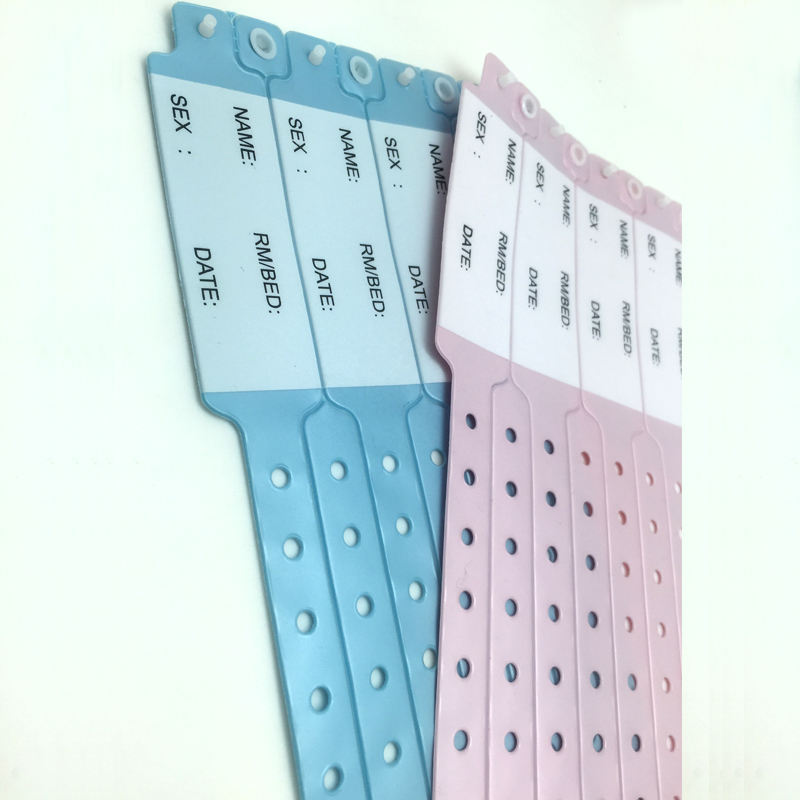The Benefits of Using a Patient Identification Band in Emergency Scenarios
Simplifying Patient Treatment With Effective Identification Bands
The application of efficient recognition bands is a crucial component in boosting person treatment within medical care settings. As the landscape of patient identification evolves, one should take into consideration the effects of these systems on total medical care distribution and individual results.
Relevance of Patient Identification
Ensuring accurate individual identification is crucial in health care settings, as it straight affects the safety and top quality of care offered. Misidentification can result in major errors, including providing the wrong medication, performing incorrect procedures, or miscommunicating crucial client information. Such mistakes not just endanger client safety and security yet can likewise result in lawful implications and reduced count on medical care systems.
Effective person identification is essential to establishing a protected environment where patients obtain ideal and tailored treatment. It helps with the accurate documents of case histories, allergies, and therapy plans, making certain that healthcare providers have access to crucial details at all times. Durable recognition protocols aid enhance interaction among medical team, boosting collaboration and minimizing the risk of errors.

Types of Identification Bands
Recognition bands play a crucial function in maintaining precise individual documents and enhancing security within medical care environments. Different kinds of identification bands are used to accommodate the specific demands and requirements of different patient populaces.

An additional kind is the ankle joint band, which is especially useful for infants and babies, making sure that identification remains undamaged even during care treatments. Specialty bands, such as those for allergic reaction notifies or drop danger indicators, supply extra layers of safety and security by drawing immediate interest to crucial person problems.
Recently, electronic identification bands have obtained popularity, including barcodes or RFID modern technology that can be checked to rapidly obtain person data. These bands simplify operations and minimize the threat of human error throughout client recognition procedures.
Benefits of Reliable Identification
Reliable identification of patients through using identification bands contributes substantially to overall person security and care high quality. By making sure that each patient is accurately determined, doctor can successfully match clinical therapies and treatments to the appropriate person, lessening the threat of errors. This is specifically important in atmospheres with high individual turn over, where the capacity for misidentification is greater.
Additionally, effective recognition bands improve interaction amongst healthcare teams. Clear and precise individual identification promotes collaboration and makes sure that all staff member know a person's particular requirements and medical background. This communication is vital for delivering worked with care, particularly in emergency situations where time is essential.

Ultimately, reliable recognition through using recognition bands not just safeguards patients but likewise advertises a culture of security within medical care centers (Patient Identification Band). By focusing on exact recognition, healthcare companies can enhance end results and boost the general person experience
Applying Identification Systems
While the relevance of individual recognition is well recognized, the implementation of robust identification systems positions a facility challenge for medical care organizations. Developing effective recognition systems go to my blog needs a detailed method, incorporating innovation, personnel training, and procedure integration.
First, companies need to choose ideal recognition technologies, such as barcode scanning, RFID, or biometric systems. Patient Identification Band. These technologies ought to be evaluated based upon cost, functionality, and compatibility with existing infrastructure. A pilot program can assist determine potential problems prior to full-scale application
Next, comprehensive training for personnel is important. All employees should understand the value of precise client identification and excel in making use of the chosen innovations. Normal training updates and evaluations can enhance best techniques view it and guarantee ongoing compliance.
In addition, healthcare organizations must develop standardized treatments for individual recognition throughout all departments, improving and minimizing inconsistencies communication. Normal audits can help recognize gaps in adherence to these procedures.

Eventually, an efficient implementation of identification systems not only enhances person security but additionally cultivates a society of responsibility and diligence within healthcare settings, making certain regular and reputable client care.
Future Trends in Person Recognition
Improvements in innovation are set to change person identification techniques in medical care setups. The integration of biometric recognition techniques, such as fingerprinting and facial acknowledgment, is expected to boost precision and safety and security. These technologies can significantly lower the danger of misidentification, ensuring that patients receive the right treatments and drugs.
Moreover, the execution of blockchain modern technology for client documents is getting traction. This decentralized approach can provide a tamper-proof and protected approach for managing person identities, thereby improving accessibility to critical information across different doctor.
Another trend is the raising use mobile health applications that take advantage of QR codes for person recognition. These applications permit real-time updates and simple access to person data, encouraging health care specialists to make informed choices promptly.
Additionally, expert system (AI) is poised to play a crucial you can try these out duty in analyzing individual identification information, identifying patterns, and forecasting potential identification mistakes prior to they occur.
As these technologies evolve, they guarantee not just to enhance person security yet additionally to enhance the overall performance of health care distribution systems. Accepting these technologies will certainly be crucial for future-proofing person treatment methods.
Final Thought
To conclude, efficient identification bands are essential for boosting patient safety and care high quality within health care settings. By minimizing the threats connected with misidentification, these bands assist in exact and prompt information access, eventually improving interaction amongst doctor. The implementation of robust recognition systems not only promotes a culture of security but likewise positions healthcare establishments to adapt to future fads in client recognition innovation, making sure optimal outcomes for clients in varied professional atmospheres.
As the landscape of client recognition progresses, one should consider the effects of these systems on overall health care distribution and patient end results.Effective patient recognition is essential to developing a safe and secure environment where clients receive tailored and suitable treatment. Eventually, focusing on efficient client recognition techniques not just fosters a culture of safety and security however also adds to boosted patient end results and overall fulfillment with healthcare services.
Effective identification of individuals through the use of recognition bands adds considerably to general person security and care top quality. The implementation of durable identification systems not just cultivates a culture of security but also positions medical care institutions to adjust to future fads in patient recognition technology, making sure optimal results for clients in varied medical atmospheres.